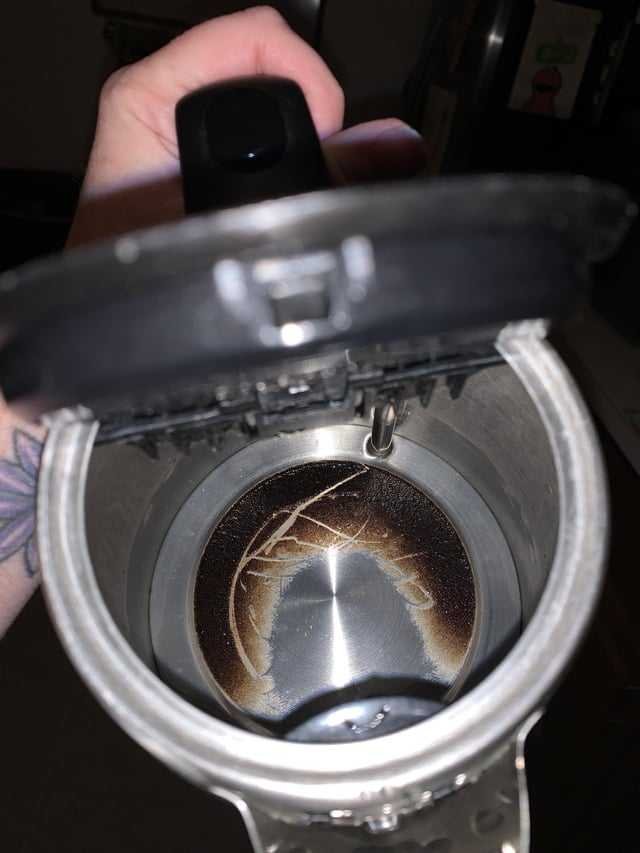Quick solution: Fill the kettle with a mixture of water and vinegar, bring it to a boil, then let it sit before scrubbing away the burnt milk. For stubborn stains, repeat the process or use a baking soda paste for extra scrubbing power.
Getting burnt milk out of an electric kettle can seem like a daunting task, but with a few simple steps, you can have it looking brand new in no time. Burnt milk tends to stick stubbornly to the sides, creating a mess that looks hard to clean. However, the key is to use natural cleaning agents like vinegar and baking soda, which work together to loosen the residue and break down the burnt milk. Starting with a boiling mixture helps lift the burnt bits, making scrubbing easier. Patience and a gentle touch will save your kettle from damage and restore its shine, so don’t worry if initial efforts seem tough—success is just a few minutes away.
How to Get Burnt Milk Out of an Electric Kettle
Understanding Why Milk Burns in Your Kettle
Burnt milk often leaves stubborn stains and a lingering smell in your electric kettle. Milk tends to stick easily because of its protein and sugar content, which caramelize under heat. Knowing why milk burns helps you prevent future mishaps and clean effectively.
Common Signs of Burnt Milk in Your Electric Kettle
You may notice a dark, sticky residue on the kettle’s bottom or walls. A strong, sour smell might also be present, which indicates milk residue. Sometimes, the kettle might emit an unpleasant smell even after cleaning.
Initial Steps to Address Burnt Milk
Before deep cleaning, unplug the kettle and let it cool down completely. Remove any leftover milk or debris from the kettle’s interior with a soft cloth or sponge. This helps prevent spreading the burnt milk further during cleaning.
Basic Cleaning Methods for Small Burnt Milk Spots
For minor stains, fill the kettle with equal parts water and white vinegar. Let it sit for about 30 minutes. Then, turn on the kettle and let the solution boil for a few minutes. Turn off the kettle, cool it, and rinse thoroughly.
Using Vinegar to Remove Burnt Milk Effectively
Vinegar is a natural descaler that dissolves burnt milk residues. Fill the kettle with a mixture of one part vinegar and two parts water. Bring it to a boil, then switch off and let it sit for 20-30 minutes. This loosens the burnt deposits for easy removal.
Employing Baking Soda for Tough Burnt Stains
Create a paste with baking soda and water. Apply this paste directly to the burnt areas and let sit for 15-20 minutes. Use a soft brush or sponge to scrub gently without damaging the kettle’s surface. Rinse thoroughly afterward.
Deep Cleaning with Lemon Juice
Lemon juice acts as a natural cleaner and deodorizer. Fill the kettle with water and add a few tablespoons of lemon juice. Boil the mixture, then let it sit for 20 minutes. The acids help break down burnt milk and eliminate odors.
Using Commercial Descaling Products
For stubborn residues, commercial descaling agents proven to be safe for electric kettles can be effective. Follow the manufacturer’s instructions carefully. Usually, they require mixing with water, boiling, and rinsing.
Scrubbing Techniques for Removing Burnt Residue
Use a non-abrasive scrub brush or sponge to avoid scratching the kettle’s interior. Gently scrub the burned areas after soaking with cleaning solutions. Focus on corners and hard-to-reach spots where residues tend to stick.
Rinsing and Ensuring No Residues Remain
After cleaning, rinse the kettle multiple times with clean water. Fill the kettle, boil, and discard the water to remove any leftover cleaning agents. Repeat this process to ensure your kettle is odor-free and spotless.
Preventive Tips to Avoid Burnt Milk Accidents
Always watch your kettle while heating milk. Use low heat settings and avoid overfilling to prevent spillage. Consider using a separate saucepan or microwave for heating milk to reduce risk.
Regular Maintenance for Your Electric Kettle
Clean your kettle weekly with a vinegar solution or lemon water to prevent buildup. Empty and dry your kettle after each use to limit moisture and residue accumulation. This prolongs its lifespan and keeps it smelling fresh.
Additional Tips for Effective Cleaning
Avoid using harsh abrasive pads that could damage the interior. Instead, opt for soft cloths or sponges. If necessary, repeat cleaning processes for stubborn stains, but always rinse thoroughly afterward.
When to Seek Professional Help
If your kettle remains stained or smells persist despite repeated cleaning, it might be time to consult a professional or consider replacing the unit. Sometimes, damage to heating elements can cause residues to cling more tightly.
Summary: Keep Your Kettle Clean and Functional
Regular cleaning and cautious use of liquids will keep your electric kettle in top condition. Proper maintenance prevents burnt milk from sticking and ensures your kettle’s longevity. Remember, patience and gentle cleaning go a long way in restoring your kettle’s shine.
Can You Boil Milk In a Kettle? Lets find out!
Frequently Asked Questions
What is the best way to loosen burnt milk residue from an electric kettle?
To loosen burnt milk, fill the kettle with equal parts water and white vinegar. Bring the mixture to a boil, then turn off the heat and let it sit for about 30 minutes. The acidity of the vinegar helps break down the buildup. After soaking, use a non-abrasive scrubber or sponge to gently clean the surface and remove remaining residues.
How can I prevent burnt milk from sticking and becoming difficult to clean later?
To prevent burning, always keep an eye on milk during heating and avoid overfilling the kettle. Stir the milk occasionally to disperse heat evenly, and use a lower heat setting if possible. Regularly cleaning the kettle after each use also prevents residue buildup, making it easier to maintain.
Are there natural solutions to remove stubborn burnt milk stains?
Yes, baking soda provides an effective natural cleaning method. Mix a few tablespoons of baking soda with water to form a paste, apply it to the affected areas, and let it sit for 15-20 minutes. Use a soft brush or sponge to scrub gently, then rinse thoroughly with water. This approach helps lift tough stains without damaging the kettle.
What should I avoid when cleaning burnt milk from my electric kettle?
Avoid using steel wool or harsh abrasive cleaners, as they can scratch the interior or damage the kettle’s coating. Also, don’t use excessive force when scrubbing, which may harm the surface. It’s best to stick with gentle cleaning tools and natural or recommended cleaning agents to maintain the kettle’s integrity.
Can I use commercial descaling products to remove burnt milk residues?
Commercial descaling products can help clean mineral deposits, but they are typically not designed for burnt milk residues. It’s safer to use vinegar or baking soda for burnt milk stains to avoid potential damage or unwanted chemical reactions. If you choose a descaling product, make sure it’s suitable for the kettle material and follow the manufacturer’s instructions carefully.
Final Thoughts
To get burnt milk out of an electric kettle, start by filling it with equal parts water and vinegar. Boil the mixture and let it sit for 15-20 minutes to loosen the residue. Use a soft sponge or brush to scrub away any remaining deposits gently.
Rinse the kettle thoroughly with clean water to remove any vinegar smell. Repeat the process if necessary to ensure all burnt milk is gone. Regular cleaning prevents future buildup and keeps your kettle in good condition.
As an Amazon Associate, We earn from qualifying purchases. When you purchase a product through Amazon links on kitchenadvising.com, we may earn a small commission at no extra cost to you. This helps support the site and keep our content free.


